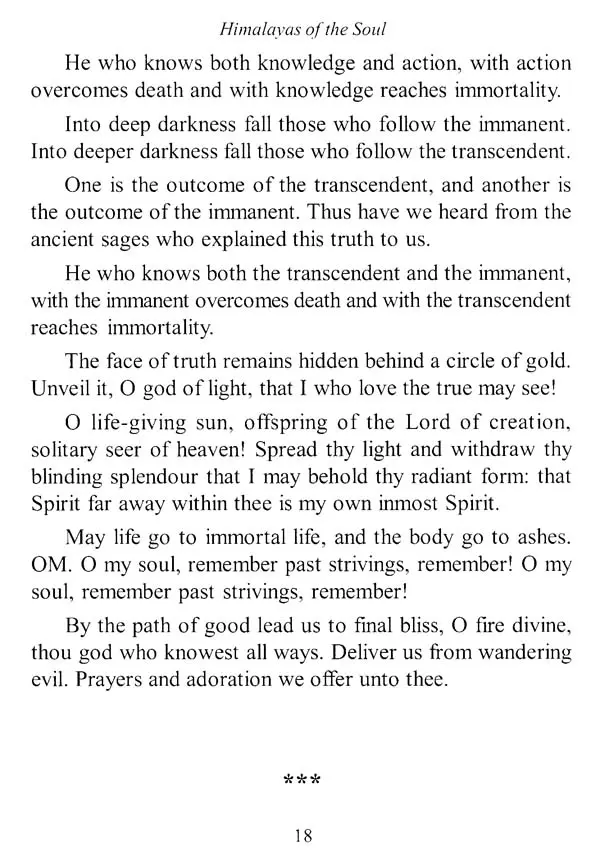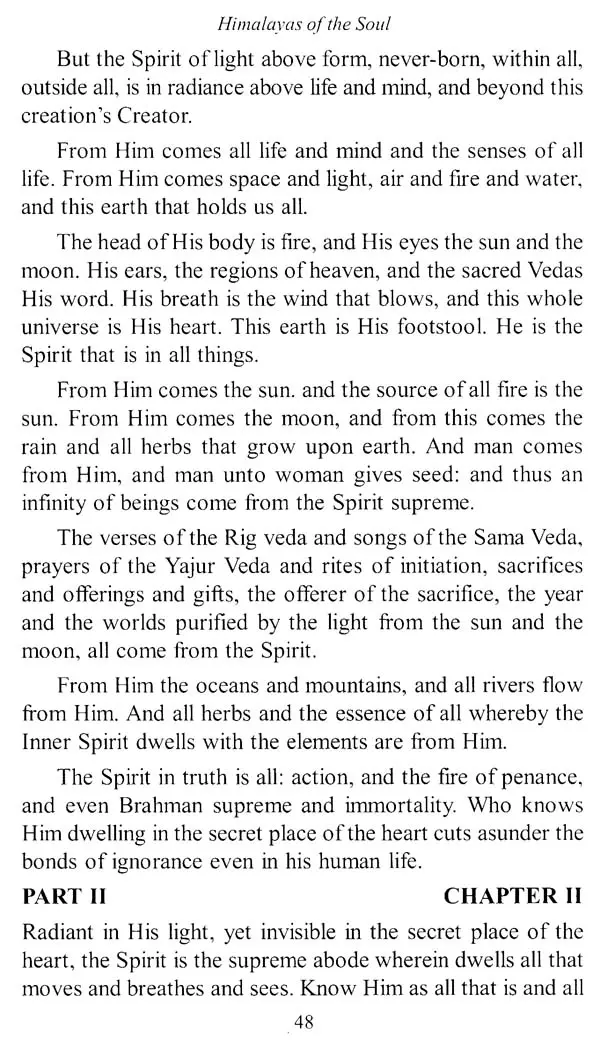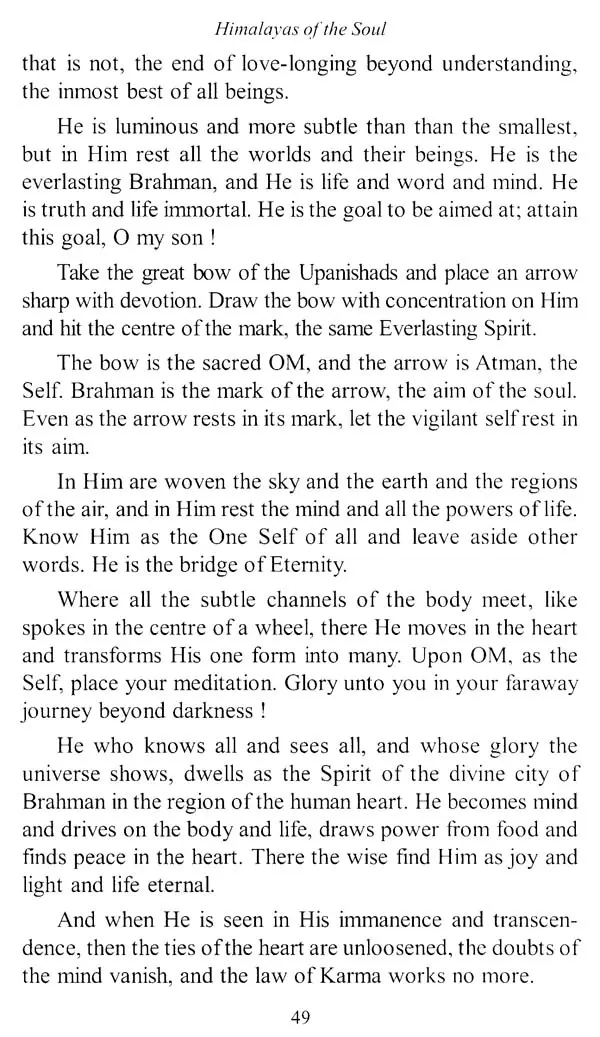
Himalayas of The Soul
Book Specification
| Item Code: | UAN303 |
| Author: | J. Mascaro |
| Publisher: | PILGRIMS PUBLISHING,VARANASI |
| Language: | English |
| Edition: | 2022 |
| ISBN: | 9789350762592 |
| Pages: | 76 |
| Cover: | PAPERBACK |
| Other Details | 8.50 X 5.50 inch |
| Weight | 120 gm |
Book Description
The Upanishads are the chief documents on which the Hindu religion in its vastness and variety rests. They also constitute the inspiration of the great Buddhist religion. In them we find the reactions of highly sensitive souls to the inexhaustible mystery of life, the wrestlings of earnest minds with the ultimate problems. We are not so far removed in spirit from the period of the Upanishads as to be untouched by its problems or unmoved by its hopes and fears.
They speak of one Spirit without a second, whose nature is unknowable and incomprehensible. The negative definitions refer to the distance between time and eternity, between appearance and reality. In the presence of the Supreme we are terrified and afraid and feel that if we are to be saved at all, it can only be by the grace of the Lord. "He whom the Self chooses, by him the Self can be gained" (Katha Up., 1, 2, 23). But there is the other side of the process. There must be a passage from time to eternity, from appearance to the absolute. Otherwise, philosophy and religion become an irrelevance. Though the nature of the Supreme is unknowable, it is yet realizable, it is yet realizable by effort and discipline in the depths of one's soul. When this shattering experience which makes us new men arises, we stand no longer over against the Supreme as trembling banished strangers. We forget the otherness of God as well as our otherness and feel "Aham Brahmasmi," "I am Brahman." Immanence and transcendence are not exclusive of each other; they represent the double movement in religious effort and experience.
It is no longer the fashion to describe religion as "morality touched by emotion." The religion feeling is something distinct from the ethical feeling or the aesthetic or any other. In its fullest expession it may be called cosmic. It is the emotion felt by the mystic when he realizes his relation to the whole and his harmony with it; and at all times it has been the poet with his supreme powers of utterance who, as prophet or seer, has been the revealer of cosmic truth.
The Upanishads, the utterances of the earliest sages and philosophers of India, show how the human mind at one bound broke through the trammels of polytheism and an elaborate system of ritual and sacrifice. Problems remained for the philosophers to solve, but the Indian thinkers never abandoned their first principles. Moreover, there is still much in these early thoughts that expresses peculiarly Indian notions, and the difficulty for Western readers has always been to realize how behind these ancient concepts lies the enthusiastic revelation of truths that are still actual for seekers of today.
Is a Bible of India were compiled, if Sanskrit could find a group of translators with the same feeling for beauty of language and the same love for the sacred texts in the original as the Bible has found in England, eternal treasures of old wisdom and poetry would enrich the times of today. Amongst those compositions, some of them living words long before writing was introduced, the Vedas, the Upanishads and the Bhagavad-Gita would rise above the rest like Himalayas of the Spirit of man.
We know practically nothing about the authors of the Upanishads. We only know that some of the most important parts were compiled about 600 B.C. and that many are of a much later date, afterfurther centuries of spiritual experience. But their words belong not only to a period of time, they belong to the Spirit of man in his wandering from the transient to the Eternal.
**Contents and Sample Pages**











